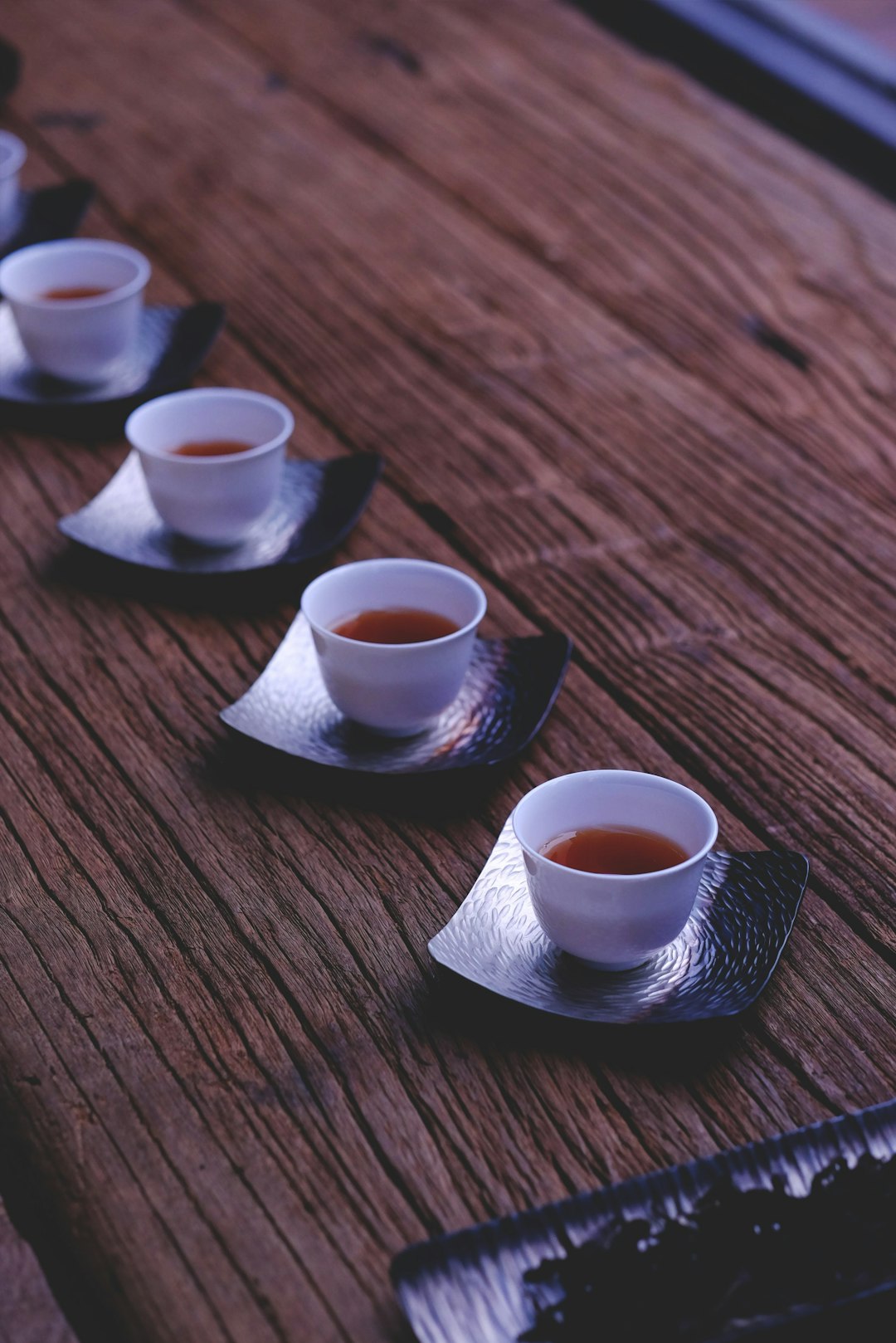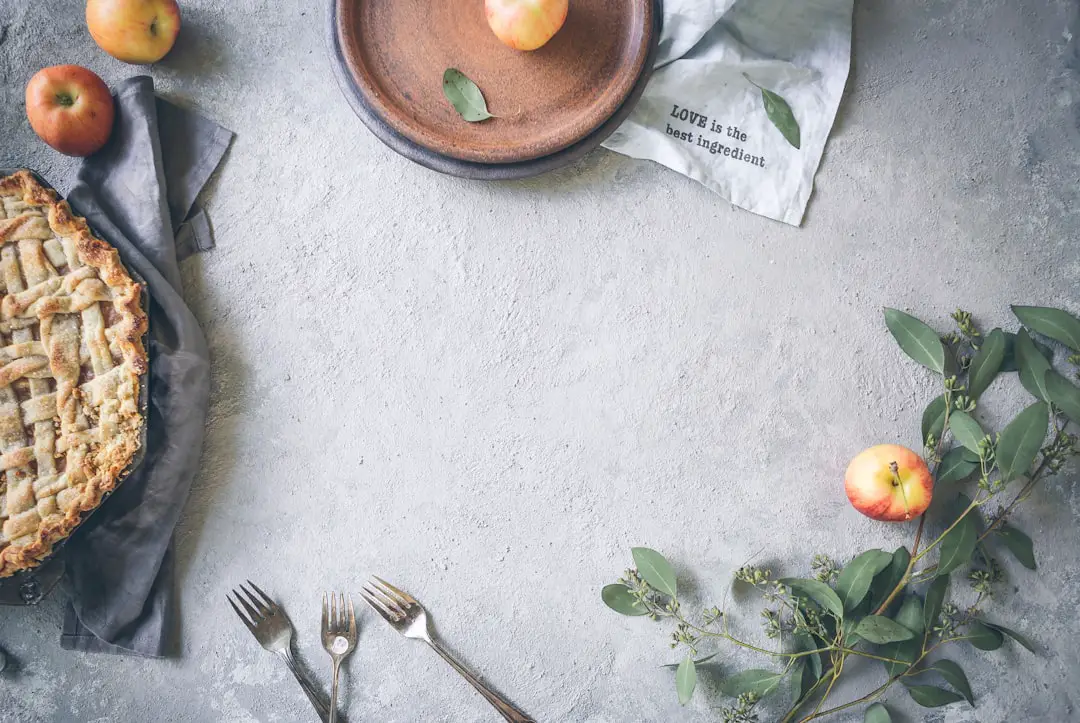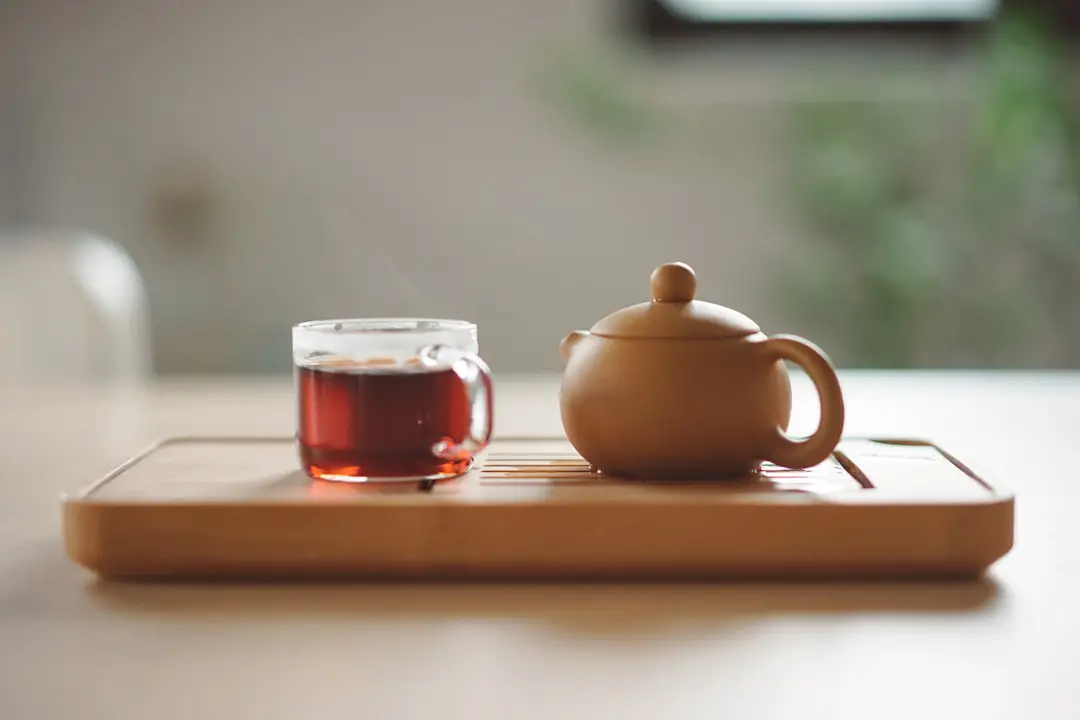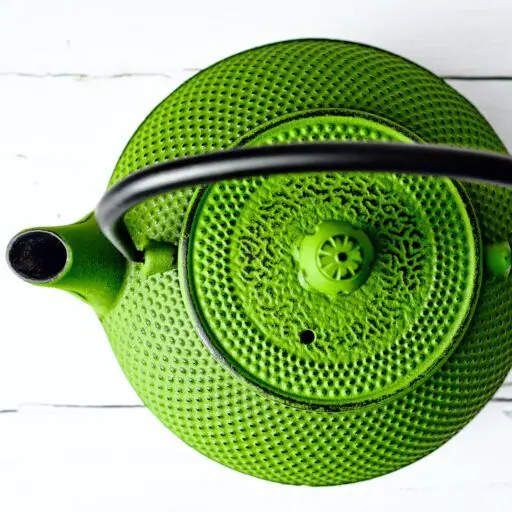Support our educational content for free when you purchase through links on our site. Learn more
How many kinds of tea are there? [2024] ☕
Have you ever wondered just how many different kinds of tea there are in the world? Well, get ready to be amazed because the answer might surprise you! At Tea Brands™, we’ve done our research and put our taste buds to the test to bring you this comprehensive guide to the many varieties of tea. From the classic black and green teas to the exotic herbal infusions, we’ve got you covered. So grab a cup of your favorite brew and let’s dive in!
Quick Answer: There are over 3000 varieties of tea! 🌱
Yes, you read that right. There are over 3000 different varieties of tea, each with its own unique flavor profile and characteristics. From the bold and robust black teas to the delicate and fragrant white teas, the world of tea is truly diverse and fascinating. So whether you’re a tea connoisseur or just starting your tea journey, there’s a flavor out there waiting for you to discover.
👉 CHECK PRICE on: Black Tea | Green Tea | Oolong Tea | White Tea | Pu-erh Tea | Herbal Tea
Quick Tips and Facts about Tea 🍵
Before we dive into the different types of tea, let’s cover some quick tips and interesting facts about tea:
✅ Tea comes from the Camellia sinensis plant, which is native to East Asia. All true teas, including black, green, oolong, white, and pu-erh, come from this plant.
✅ Tea varieties can be named after the region they are grown in, such as Assam tea from Assam, India, and Yunnan tea from Yunnan, China. The terroir of the region can greatly influence the flavor and aroma of the tea.
✅ Tea leaves are harvested and processed differently to create the various types of tea. The level of oxidation and the processing methods used determine the final flavor and appearance of the tea.
✅ Herbal infusions, also known as herbal tea or tisanes, do not contain any tea leaves. Instead, they are made by combining boiling water with botanicals like fruits, flowers, barks, herbs, mints, spices, roots, berries, and seeds.
✅ Yerba Mate and Guayusa are naturally caffeinated herbal infusions from South America. They are valued for their unique balance of caffeine and smooth, energizing effect.
Now that we’ve covered the basics, let’s explore the different types of tea in more detail!
Background: The Fascinating History of Tea 📜

Before we delve into the various types of tea, let’s take a moment to appreciate the rich history and cultural significance of this beloved beverage. Tea has been enjoyed for centuries and has played a pivotal role in many cultures around the world.
Tea originated in ancient China, where it was initially consumed for its medicinal properties. Over time, tea drinking became a popular social activity and an integral part of Chinese culture. The practice of tea drinking spread to neighboring countries like Japan and Korea, where it also became deeply ingrained in their traditions.
During the 17th century, tea made its way to Europe and quickly gained popularity among the aristocracy. The British, in particular, developed a strong affinity for tea and established vast tea plantations in their colonies, such as India and Sri Lanka. This led to the widespread cultivation and production of tea on a global scale.
Today, tea is enjoyed by people from all walks of life and is celebrated for its diverse flavors, health benefits, and calming effects. It has become a symbol of hospitality, comfort, and relaxation in many cultures.
1. Black Tea: Bold and Robust Flavor 🖤
Black tea is perhaps the most well-known and widely consumed type of tea. It is known for its bold and robust flavor, deep amber color, and invigorating aroma. Black tea undergoes a full oxidation process, which gives it its distinctive characteristics.
Black Tea Rating Table:
| Aspect | Rating (1-10) |
|---|---|
| Flavor | 9 |
| Aroma | 8 |
| Color | 9 |
| Caffeine Content | 7 |
| Cost-Effectiveness | 8 |
| Overall Score | 8.2 |
What makes black tea unique?
- Black tea is fully oxidized, which means the tea leaves are exposed to air and undergo a natural fermentation process. This oxidation process gives black tea its rich flavor and dark color.
- The flavor profile of black tea can vary widely, ranging from malty and robust to floral and fruity, depending on the region and specific tea leaves used.
- Some popular varieties of black tea include English Breakfast, Earl Grey, Assam, Darjeeling, and Ceylon.
👉 CHECK PRICE on: English Breakfast Tea | Earl Grey Tea | Assam Tea | Darjeeling Tea | Ceylon Tea
Benefits of black tea:
- Black tea is rich in antioxidants, which can help protect the body against free radicals and reduce the risk of chronic diseases.
- It contains caffeine, which can provide a natural energy boost and improve mental alertness.
- Black tea has been associated with various health benefits, including improved heart health, lower cholesterol levels, and enhanced digestion.
Drawbacks of black tea:
- Black tea contains caffeine, which can cause sleep disturbances and may not be suitable for individuals sensitive to caffeine.
- Some people may find the bold flavor of black tea too strong or bitter.
2. Green Tea: Delicate and Refreshing Flavor 💚
Green tea is renowned for its delicate flavor, pale green or golden color, and numerous health benefits. Unlike black tea, green tea is minimally processed and undergoes minimal oxidation, preserving its natural antioxidants and nutrients.
Green Tea Rating Table:
| Aspect | Rating (1-10) |
|---|---|
| Flavor | 7 |
| Aroma | 8 |
| Color | 9 |
| Caffeine Content | 6 |
| Cost-Effectiveness | 7 |
| Overall Score | 7.4 |
What makes green tea unique?
- Green tea is made from tea leaves that are withered and then either steamed or pan-fried to prevent oxidation. This minimal processing helps retain the natural green color and delicate flavor of the tea.
- The flavor profile of green tea can range from grassy and vegetal to nutty and sweet, depending on the specific variety and brewing method.
- Some popular varieties of green tea include Sencha, Matcha, Dragon Well, and Gunpowder.
👉 CHECK PRICE on: Sencha Green Tea | Matcha Green Tea | Dragon Well Green Tea | Gunpowder Green Tea
Benefits of green tea:
- Green tea is packed with antioxidants called catechins, which have been shown to have numerous health benefits, including reducing the risk of heart disease, improving brain function, and aiding in weight loss.
- It contains a moderate amount of caffeine, which can provide a gentle energy boost without the jitters associated with coffee.
- Green tea has been used in traditional medicine for centuries and is believed to have anti-inflammatory and anti-cancer properties.
Drawbacks of green tea:
- Green tea can have a slightly bitter or astringent taste, which may not appeal to everyone’s palate.
- Some people may find the grassy or vegetal flavor of green tea too mild or lacking in complexity.
3. Oolong Tea: A Perfect Balance 🍃
Oolong tea is a partially oxidized tea that falls somewhere between black and green tea in terms of flavor and characteristics. It offers a wide range of flavors, from light and floral to rich and toasty, making it a favorite among tea enthusiasts.
Oolong Tea Rating Table:
| Aspect | Rating (1-10) |
|---|---|
| Flavor | 8 |
| Aroma | 9 |
| Color | 8 |
| Caffeine Content | 7 |
| Cost-Effectiveness | 7 |
| Overall Score | 7.8 |
What makes oolong tea unique?
- Oolong tea is partially oxidized, meaning the tea leaves are allowed to undergo a controlled level of fermentation before being dried. This oxidation process gives oolong tea its unique flavor and aroma.
- The flavor profile of oolong tea can vary widely, ranging from light and floral to rich and toasty, depending on the oxidation level and specific tea leaves used.
- Some popular varieties of oolong tea include Tie Guan Yin, Da Hong Pao, and Oriental Beauty.
👉 CHECK PRICE on: Tie Guan Yin Oolong Tea | Da Hong Pao Oolong Tea | Oriental Beauty Oolong Tea
Benefits of oolong tea:
- Oolong tea contains antioxidants that can help boost metabolism and aid in weight loss.
- It has been associated with various health benefits, including improved digestion, reduced risk of heart disease, and enhanced mental alertness.
- Oolong tea is known for its calming and relaxing effects, making it a popular choice for those seeking a moment of tranquility.
Drawbacks of oolong tea:
- Oolong tea can be more expensive compared to black or green tea, depending on the variety and quality.
- Some people may find the flavor of oolong tea too complex or acquired.
4. White Tea: Delicate and Subtle Flavor 🌼
White tea is the least processed of all the tea types and is known for its delicate and subtle flavor. It is made from young tea leaves and buds that are simply withered and dried, allowing for minimal oxidation.
White Tea Rating Table:
| Aspect | Rating (1-10) |
|---|---|
| Flavor | 7 |
| Aroma | 8 |
| Color | 9 |
| Caffeine Content | 5 |
| Cost-Effectiveness | 6 |
| Overall Score | 7.0 |
What makes white tea unique?
- White tea is made from young tea leaves and buds that are plucked before they fully open. These delicate leaves are simply withered and dried, preserving their natural flavor and appearance.
- The flavor profile of white tea is often described as light, floral, and slightly sweet, with subtle nuances that can vary depending on the specific variety and origin.
- Some popular varieties of white tea include Silver Needle, Bai Mu Dan, and Shou Mei.
👉 CHECK PRICE on: Silver Needle White Tea | Bai Mu Dan White Tea | Shou Mei White Tea
Benefits of white tea:
- White tea is rich in antioxidants, which can help protect the body against free radicals and reduce the risk of chronic diseases.
- It contains a low amount of caffeine, making it a suitable choice for those looking for a milder alternative to black or green tea.
- White tea has a soothing and calming effect on the body, making it a popular choice for relaxation and stress relief.
Drawbacks of white tea:
- White tea can be more expensive compared to other types of tea, depending on the variety and quality.
- Some people may find the flavor of white tea too subtle or lacking in complexity.
5. Pu-erh Tea: Earthy and Distinctive Flavor 🌍
Pu-erh tea is a unique type of tea that comes exclusively from China and is known for its distinctively earthy flavor. It is made from fermented tea leaves and undergoes a special aging process, which gives it its unique characteristics.
Pu-erh Tea Rating Table:
| Aspect | Rating (1-10) |
|---|---|
| Flavor | 9 |
| Aroma | 7 |
| Color | 8 |
| Caffeine Content | 8 |
| Cost-Effectiveness | 6 |
| Overall Score | 7.6 |
What makes pu-erh tea unique?
- Pu-erh tea is made from tea leaves that have undergone a fermentation process, similar to aging wine or cheese. This fermentation gives pu-erh tea its distinctively earthy and mellow flavor.
- The flavor profile of pu-erh tea can range from mild and smooth to rich and robust, depending on the specific variety and aging process.
- Pu-erh tea is often compressed into cakes or bricks, which can be aged for many years, resulting in a deeper and more complex flavor.
👉 CHECK PRICE on: Pu-erh Tea
Benefits of pu-erh tea:
- Pu-erh tea is believed to aid in digestion and promote gut health due to its probiotic properties.
- It contains caffeine, which can provide a natural energy boost and improve mental alertness.
- Pu-erh tea has been associated with various health benefits, including weight management, cholesterol reduction, and improved heart health.
Drawbacks of pu-erh tea:
- The earthy flavor of pu-erh tea may not appeal to everyone’s taste buds, especially those who prefer milder or more floral teas.
- Pu-erh tea can be more expensive compared to other types of tea, especially aged or rare varieties.
6. Yellow Tea: A Rare and Delicate Brew ☀️
Yellow tea is the rarest type of tea and is often considered a specialty tea. It is processed similarly to green tea but undergoes a slower drying process, which gives it its unique flavor and appearance.
Yellow Tea Rating Table:
| Aspect | Rating (1-10) |
|---|---|
| Flavor | 7 |
| Aroma | 8 |
| Color | 9 |
| Caffeine Content | 6 |
| Cost-Effectiveness | 6 |
| Overall Score | 7.2 |
What makes yellow tea unique?
- Yellow tea is made from tea leaves that are withered and then slowly dried, allowing for a slight oxidation process. This slow drying process gives yellow tea its unique flavor and appearance.
- The flavor profile of yellow tea is often described as mild, sweet, and slightly floral, with a smooth and creamy texture.
- Yellow tea is less well-known compared to other types of tea and is often considered a hidden gem among tea enthusiasts.
👉 CHECK PRICE on: Yellow Tea
Benefits of yellow tea:
- Yellow tea contains antioxidants that can help protect the body against free radicals and reduce the risk of chronic diseases.
- It has a lower caffeine content compared to black or green tea, making it a suitable choice for those looking for a milder alternative.
- Yellow tea is known for its calming and soothing effects, making it a popular choice for relaxation and stress relief.
Drawbacks of yellow tea:
- Yellow tea can be more difficult to find compared to other types of tea, as it is less widely available.
- Some people may find the flavor of yellow tea too mild or lacking in complexity.
Herbal Infusions: Exploring the World of Botanical Blends 🌺
Apart from the traditional tea types, there is a whole world of herbal infusions waiting to be explored. Herbal infusions, also known as herbal tea or tisanes, are made by combining boiling water with botanicals like fruits, flowers, barks, herbs, mints, spices, roots, berries, and seeds. These caffeine-free blends offer a wide range of flavors and health benefits.
What makes herbal infusions unique?
- Herbal infusions do not contain any tea leaves and are caffeine-free, making them a popular choice for those looking for a soothing and caffeine-free beverage.
- The flavor profiles of herbal infusions can vary widely, depending on the specific botanicals used. From fruity and floral to spicy and aromatic, there’s an herbal infusion for every taste preference.
- Some popular herbal infusions include chamomile, peppermint, hibiscus, rooibos, and ginger.
👉 CHECK PRICE on: Chamomile Tea | Peppermint Tea | Hibiscus Tea | Rooibos Tea | Ginger Tea
Benefits of herbal infusions:
- Herbal infusions are naturally caffeine-free, making them a suitable choice for those looking to reduce their caffeine intake or avoid it altogether.
- Many herbal infusions have been used in traditional medicine for their various health benefits, such as promoting relaxation, aiding digestion, and boosting the immune system.
- Herbal infusions offer a wide range of flavors and aromas, making them a versatile and enjoyable beverage option.
Drawbacks of herbal infusions:
- Some herbal infusions may interact with certain medications or have contraindications for certain medical conditions. It’s always best to consult with a healthcare professional before incorporating herbal infusions into your routine.
- The flavor profiles of herbal infusions can be more subtle compared to traditional teas, which may not appeal to those who prefer stronger or more robust flavors.
FAQ 🙋♀️

How many real teas are there?
There are six main types of real tea: black tea, green tea, oolong tea, white tea, pu-erh tea, and yellow tea. These teas all come from the Camellia sinensis plant and undergo different levels of oxidation and processing.
Read more about “Bigelow Tea Flavors: Sip and Savor the Finest Tea … 🍵”
What are the 10 different types of teas?
The ten different types of teas are black tea, green tea, oolong tea, white tea, pu-erh tea, yellow tea, chamomile tea, peppermint tea, hibiscus tea, and rooibos tea. The first six are true teas made from the Camellia sinensis plant, while the latter four are herbal infusions made from botanicals.
Read more about “Top Tea Brands … 🍵”
What are the 4 types of tea?
The four main types of tea are black tea, green tea, oolong tea, and white tea. These teas differ in their level of oxidation and processing methods, resulting in distinct flavors and characteristics.
Read more about “Sip and Savor the Finest Brew: Top 10 Best Black Teas in the World … 🍵”
What are the 6 general kinds of tea?
The six general kinds of tea are black tea, green tea, oolong tea, white tea, pu-erh tea, and yellow tea. These teas encompass the main categories of true teas made from the Camellia sinensis plant.
Read more about “Best Organic Green Tea: The Ultimate Guide … 🍵”
Conclusion: Explore the World of Tea! 🌍

Congratulations, you’ve now become a tea aficionado! We’ve covered the six main types of tea, from the bold and robust black teas to the delicate and fragrant white teas. We’ve also explored the unique flavors of oolong, pu-erh, and yellow teas, as well as the diverse world of herbal infusions.
No matter your taste preferences or health goals, there’s a tea out there for you. So why not embark on a tea-tasting adventure and discover your new favorite brew? Whether you prefer a strong cup of black tea to kickstart your day or a soothing herbal infusion to unwind in the evening, tea has something to offer everyone.
Remember, tea is not just a beverage; it’s a journey of flavors, cultures, and traditions. So sip, savor, and enjoy the wonderful world of tea!
Recommended Links
- Tea Brand Spotlights: Explore our in-depth reviews of popular tea brands and discover new favorites.
- Tea Brand Guides: Get expert insights and recommendations on the best tea brands for every occasion.
- Health Benefits of Tea: Learn about the numerous health benefits of tea and how it can improve your well-being.
- Herbal Tea: Dive into the world of herbal infusions and discover the wide range of flavors and health benefits they offer.
- Tea Culture and History: Immerse yourself in the rich history and cultural significance of tea.
Reference Links
- Types of Tea – Your Guide to Tea Varieties | Stash Tea: A comprehensive guide to the different types of tea from Stash Tea.
- What are the Six Main Types of Tea? 2024 ☕: Learn more about the six main types of tea in our detailed article.
Now that you’re armed with knowledge about the many kinds of tea, it’s time to brew a cup and savor the flavors. Happy tea tasting! 🍵
